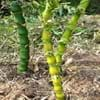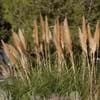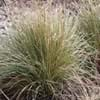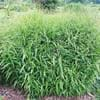Life Span
Perennial
Perennial
Origin
China, Japan
China
Types
Slender Weavers Bamboo, Golden Buddha's Belly Bamboo, Painted Bamboo
Not Available
Habitat
Subtropical climates, Subtropical forests
Forest margins, gardens, Grassland, Tropical regions
USDA Hardiness Zone
9-11
8-15
AHS Heat Zone
12 - 9
12 - 1
Sunset Zone
H1, 18, 19, 20, 21, 22, 23, 24
H1, H2, 8, 9, 14, 15, 16, 17, 18, 19, 20, 21, 22, 23, 24
Habit
Clump-Forming
Clump-Forming
Minimum Width
Not Available
Flower Color
Red
Not Available
Flower Color Modifier
Bicolor
Bicolor
Fruit Color
Brown
Not Available
Leaf Color in Spring
Dark Green
Light Green, Dark Green
Leaf Color in Summer
Light Green
Light Green
Leaf Color in Fall
Dark Green
Light Green, Dark Green
Leaf Color in Winter
Dark Green
Light Green, Dark Green
Leaf Shape
Linear
Grass like
Plant Season
Spring, Summer, Fall, Winter
Spring, Summer, Fall, Winter
Sunlight
Full Sun, Partial Sun, Partial shade
Full Sun, Partial Sun, Partial shade
Type of Soil
Clay, Loam, Sand
Loam, Sand
The pH of Soil
Acidic, Neutral, Alkaline
Acidic, Neutral, Alkaline
Soil Drainage
Average
Average
Bloom Time
Not Available
Not Available
Tolerances
Not Available
Drought
Where to Plant?
Container, Ground
Ground, Pot
How to Plant?
Divison
Seedlings, Transplanting
Plant Maintenance
Medium
Medium
Watering Requirements
Allow to dry out slightly between watering, Needs 2-3 times watering per week, Requires watering in the growing season, Water Deeply, Water when soil is dry
Keep the ground moist but not water-logged, Requires regular watering, Use and maintain water-efficient soaker hoses, Use Mulches to help prevent water loss during hot and windy weather, Water every two or three days during warmer months, Water twice a day in the initial period
In Summer
Lots of watering
Lots of watering
In Spring
Moderate
Moderate
In Winter
Less Watering
Average Water
Soil pH
Acidic, Neutral, Alkaline
Acidic, Neutral, Alkaline
Soil Type
Clay, Loam, Sand
Loam, Sand
Soil Drainage Capacity
Average
Average
Sun Exposure
Full Sun, Partial Sun, Partial shade
Full Sun, Partial Sun, Partial shade
Pruning
Cut the culms, Remove damaged leaves, Remove dead branches, Remove dead leaves, Remove dead or diseased plant parts
Remove damaged leaves, Remove dead branches, Remove dead leaves
Fertilizers
All-Purpose Liquid Fertilizer, fertilize in growing season
All-Purpose Liquid Fertilizer
Pests and Diseases
Red blotch
Red blotch
Plant Tolerance
Not Available
Drought
Flower Petal Number
Single
Single
Foliage Texture
Medium
Medium
Foliage Sheen
Matte
Matte
Attracts
Butterflies, Mites
Birds
Allergy
Pollen, Rash
no allergic reactions
Aesthetic Uses
Bonsai
Beautification
Beauty Benefits
Good for skin and hair, Not Available
Not Available
Environmental Uses
Air purification
Air purification
Medicinal Uses
Healthy teeth, Pain in gums
Not Available
Part of Plant Used
Sap, Stem
Whole plant
Other Uses
Container, Espalier, Screen, Used in paper industry
Culinary use, Used in construction, Used in Furniture, Used in making musical instruments, Used in paper industry
Used As Indoor Plant
Insignificant
No
Used As Outdoor Plant
Yes
Yes
Garden Design
Container, Feature Plant, Screening / Wind Break, Topiary / Bonsai / Espalier, Tropical
Container, Feature Plant, Hedges, Screening / Wind Break, Tropical
Botanical Name
BAMBUSA ventricosa
BAMBUSA multiplex 'Alphonso-Karrii'
Common Name
Buddha's Belly Bamboo, Clumping Bamboo, Ventricose Bamboo
Alphonse Karr Bamboo, Clumping Bamboo, Hedge Bamboo
In Hindi
बुद्ध के पेट बांस
अल्फोंस Karr बांस
In German
Buddhas Bauch Bambus
Alphonse Karr Bamboo
In French
Le Bamboo Belly de Bouddha
Alphonse Karr Bamboo
In Spanish
De bambú del vientre de Buda
Alphonse Karr Bambú
In Greek
Κοιλιά Μπαμπού Βούδα
Alphonse Karr Μπαμπού
In Portuguese
Bamboo barriga de Buda
Alphonse Karr Bamboo
In Polish
Buddy Belly Bamboo
Alphonse Karr Bamboo
In Latin
Buddha ventre Bamboo
Alphonse Karr Bamboo
Phylum
Magnoliophyta
Not Available
Class
Liliopsida
Not Available
Clade
Angiosperms, Commelinids, Monocots
Angiosperms, Commelinids, Monocots
Tribe
Bambuseae
Bambuseae
Subfamily
Bambusoideae
Bambusoideae
Number of Species
Not Available
Not Available
Season and Care of Buddha's Belly Bamboo and Alphonse Karr Bamboo
Season and care of Buddha's Belly Bamboo and Alphonse Karr Bamboo is important to know. While considering everything about Buddha's Belly Bamboo and Alphonse Karr Bamboo Care, growing season is an essential factor. Buddha's Belly Bamboo season is Spring, Summer, Fall and Winter and Alphonse Karr Bamboo season is Spring, Summer, Fall and Winter. The type of soil for Buddha's Belly Bamboo is Clay, Loam, Sand and for Alphonse Karr Bamboo is Loam, Sand while the PH of soil for Buddha's Belly Bamboo is Acidic, Neutral, Alkaline and for Alphonse Karr Bamboo is Acidic, Neutral, Alkaline.
Buddha's Belly Bamboo and Alphonse Karr Bamboo Physical Information
Buddha's Belly Bamboo and Alphonse Karr Bamboo physical information is very important for comparison. Buddha's Belly Bamboo height is 152.40 cm and width 5.50 cm whereas Alphonse Karr Bamboo height is 460.00 cm and width Not Available. The color specification of Buddha's Belly Bamboo and Alphonse Karr Bamboo are as follows:
Buddha's Belly Bamboo flower color: Red
Buddha's Belly Bamboo leaf color: Dark Green
Alphonse Karr Bamboo flower color: Not Available
- Alphonse Karr Bamboo leaf color: Light Green and Dark Green
Care of Buddha's Belly Bamboo and Alphonse Karr Bamboo
Care of Buddha's Belly Bamboo and Alphonse Karr Bamboo include pruning, fertilizers, watering etc. Buddha's Belly Bamboo pruning is done Cut the culms, Remove damaged leaves, Remove dead branches, Remove dead leaves and Remove dead or diseased plant parts and Alphonse Karr Bamboo pruning is done Remove damaged leaves, Remove dead branches and Remove dead leaves. In summer Buddha's Belly Bamboo needs Lots of watering and in winter, it needs Less Watering. Whereas, in summer Alphonse Karr Bamboo needs Lots of watering and in winter, it needs Average Water.





